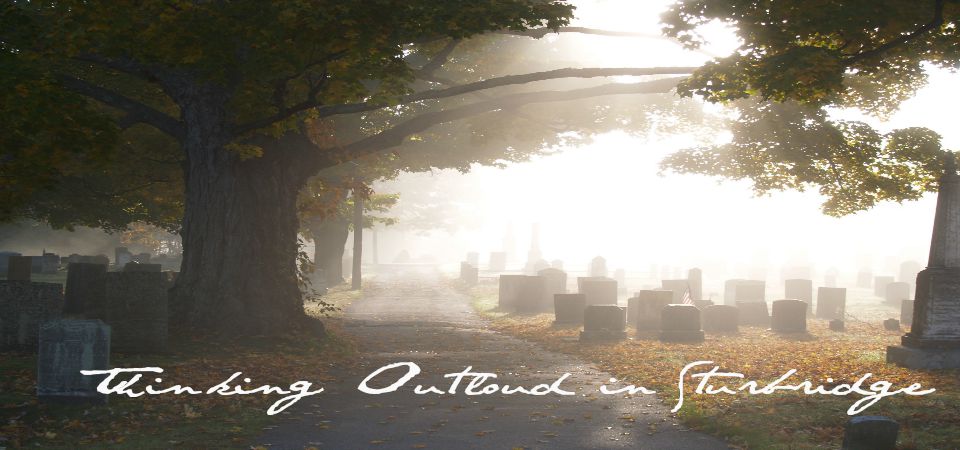 |
| The Bay Bath in Sturbridge |
The Wilbur Cross Highway met up with route MA-15 in 1952. Those modern day routes were the main roadways connecting Boston and New York City, and thousands of people traveled along them every week. Sturbridge was at the junction of the cross country highway Route 20, and MA-15 until the Massachusetts Turnpike bisected town in 1957, followed by I-86 (now I-84). These roadways also were also ideal locations for placing signs for both direction, and advertising. Some were billboard-like, others merely lighted signs advertising a restaurant or an inn. As the four lane Wilbur Cross / MA-15 gave way to the new interstate I-86 the signs could no longer be seen as well from the vehicles on the new high speed interstate. So they were left where they stood until the trees overtook them, and forever blocked their message from those coming to town.
The exciting news is, some of those antique, and historic bits of signage are still there standing forgotten in the woods. Steel and wooden memories of a time long gone.
 The sign at the left is just off of Haynes Street, Old MA-15. It stands on rusted steel girders and the image is an open box of chocolates. There is no text remaining, but the candy looks as good as it did 40 plus years ago.
The sign at the left is just off of Haynes Street, Old MA-15. It stands on rusted steel girders and the image is an open box of chocolates. There is no text remaining, but the candy looks as good as it did 40 plus years ago.Roadside "archeology" is a hobby that many study along the highways, and backroads of America, and Sturbridge has many lost and forgotten pieces of modern times scattered about along the roads, or hidden by the continually growing roadside forests. The late fall and winter, when the leaves are off the trees, are the best time to discover these facinating glimpses of our history. Keep your eyes open as you motor around town, and you just may discover a piece of motoring history like the old sign post below.
This one is located on Breakneck Road. Do you know what the sign advertised? If you know anything about either sign, or have a piece of Forgotten Sturbridge you would like to share, let me know.
Springtime is here, and it's a nice time to go on an explore.



Wally; Both old signs advertised for Hebert Candies, the one down at
ReplyDeleteBreakneck Rd said "Hebert Candies Next exit"
Tom C